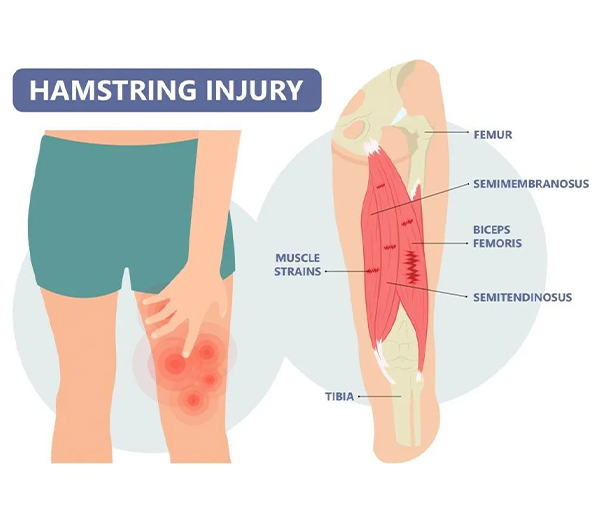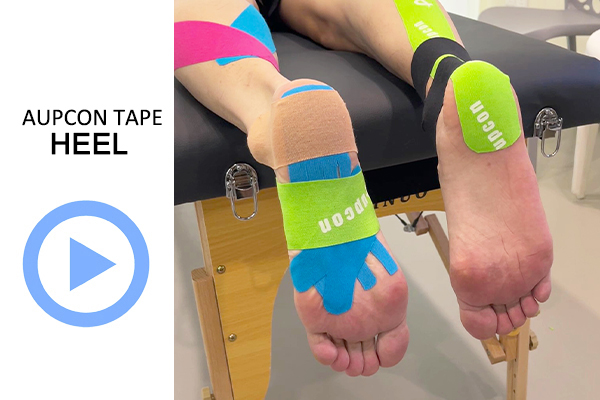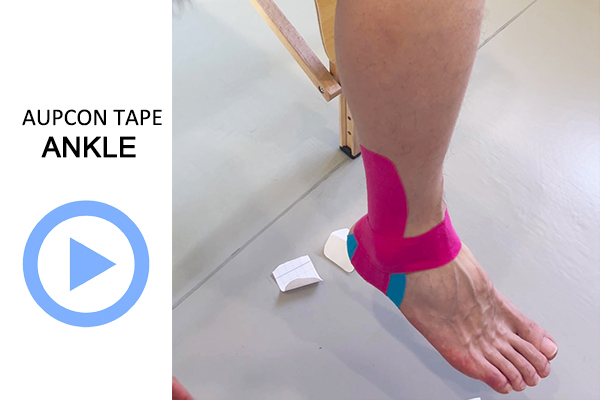How to use kinesiology tape for hamstring?
Hamstring strains
Hamstring injuries typically occur after overexertion and affect the hamstring muscles located at the back of the thigh or behind the knee. These injuries include hamstring strains, biceps femoris tendonitis, and hamstring tears. This article will focus on treatment methods for hamstring strains (strained muscles in the back of the thigh); symptoms include localised pain, swelling, and limited range of motion behind the knee.
Learning how to use kinesiology tape for hamstrings to treat hamstring strains is a good option.
Kinesiology tape TAPING TIPS
- Clean your skin before applying to extend the life of the kinesiology tape for hamstring.
- To ensure a secure fit, round the edges of the tape to prevent it from falling off.
- Do not touch the glue surface when applying the tape to avoid affecting the stickiness.
- After applying, wipe the kinesiology tape for hamstring several times to make it stick firmly.
- Avoid prolonged use and replace it within 3-7 days.
- If there is an open wound on the thigh, do not apply to the area.
How to use kinesiology tape for hamstring?
First, secure one end of the first strip of hamstring muscle tape to the right hamstring and stretch it 75% to fit it.
Next, attach one end of the second strip of hamstring muscle tape to the left hamstring and stretch it 75% to fit it.
Finally, rub the hamstring muscle tape repeatedly to ensure it adheres firmly, and you’re done.
What is a kinesiology tape for hamstring?
Key benefits of kinesiology tape for hamstring
Pain relief: Lifting the skin releases pressure on subcutaneous tissue, reducing friction and effectively relieving pain.
Providing support: Hamstring physio tape provides structural support to the hamstrings, reducing pressure.
Reducing inflammation: Hamstring physio tape promotes blood circulation and lymphatic drainage, helping to reduce swelling and tendinitis in the affected area.
Relieving tension: Hamstring physio tape relaxes tense muscles, improving hamstring flexibility and range of motion.
Cotton kinesiology tape
for hamstring strains
→
Frequently Asked Questions
Excessive Exercise: High-intensity, prolonged running and jumping exercises, especially sudden increases in intensity or volume, put excessive pressure on the fascia, easily leading to overstretching and strain.
Poor Posture: Maintaining poor posture, such as hunching over or standing on one leg for extended periods, keeps the fascia in a state of tension, increasing the risk of strain.
Insufficient Warm-up: Without adequate warm-up before exercise, the fascia is not properly prepared, making it more susceptible to injury during exercise.
External Impact: Direct impact from external forces, such as falls or collisions, can damage the fascia. When the body is subjected to external force, the fascia can be strained due to the sudden impact.
Localised Pain: Hamstring strains are usually caused by insufficient warm-up before exercise or overexertion (exceeding the body’s capacity), leading to muscle fibre damage and causing localised pain.
Swelling: A strained hamstring muscle can cause local soft tissue damage, increased vascular permeability, and increased leakage of tissue fluid, leading to swelling.
Limited Mobility: A strained hamstring muscle causes localized pain and swelling. If symptoms are severe, activity can further strain the muscle, exacerbating pain and limiting mobility.
These issues strongly suggest the use of kinesiology tape for hamstring. The therapeutic effects of the physio tape can alleviate these problems, helping you recover from the discomfort of a hamstring strain as soon as possible.
Yes, kinesiology tape for hamstring is a relatively safe and effective physical therapy method. Using the application method described in this article, you can achieve various benefits, such as relieving pain, reducing swelling, and alleviating stress. Furthermore, kinesiology tape for hamstring can be seamlessly integrated into your life without causing any burden. It’s not only effective for hamstring strains but also for similar conditions such as quadriceps strains, iliacus band syndrome, and calf muscle strains.
Kinesiology tape primarily relieves pain by reducing pressure on pain receptors. Therefore, it is very effective for a range of muscle strains and tendinitis.
The answer is that kinesiology tape for hamstring can also be used to treat hamstring strain in children. Because Aupcon tape is made of high-quality fabric and hypoallergenic adhesive, it is completely suitable and comfortable for children’s delicate skin. It can effectively relieve and heal the injury by applying scientific taping methods.
Other Body Parts
If you are interested in Aupcon‘s tape usage tutorials or would like to obtain genuine physio tape from the kinesiology tape manufacturer, please contact Aupcon. We will continue to provide solutions for related conditions and help you learn how to use kinesiology tape.





